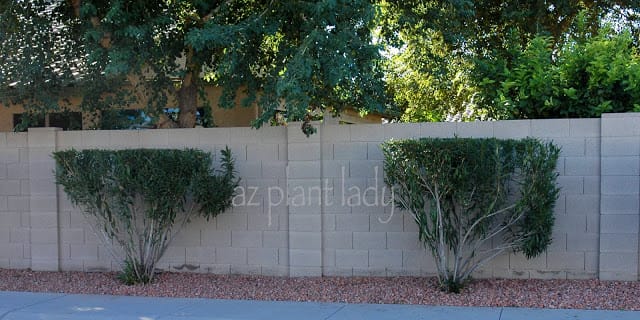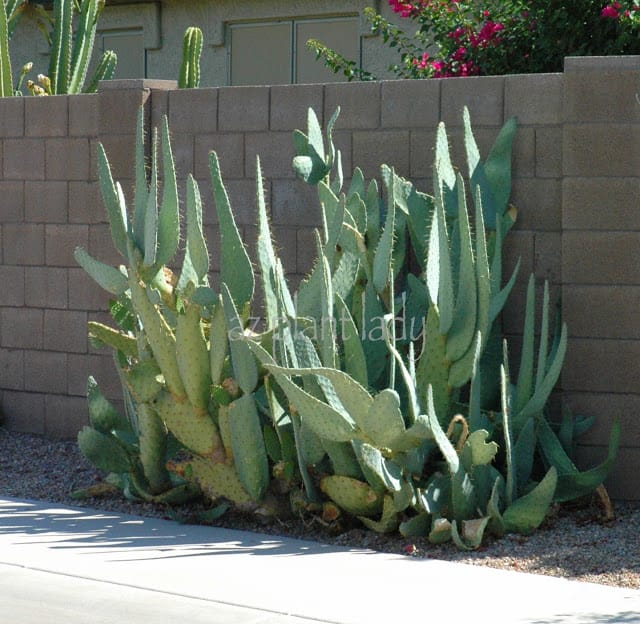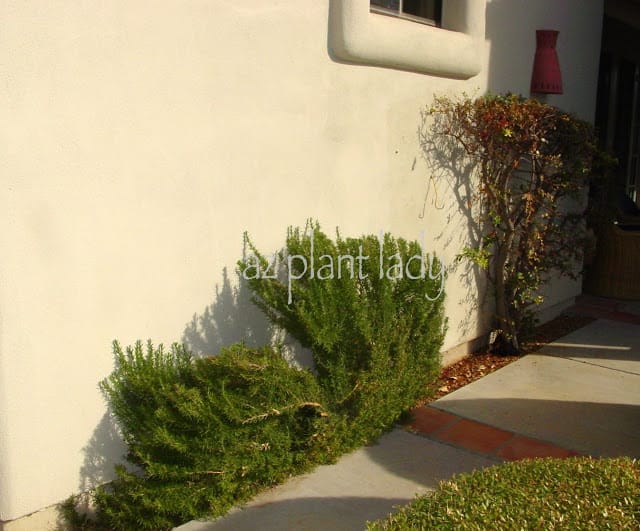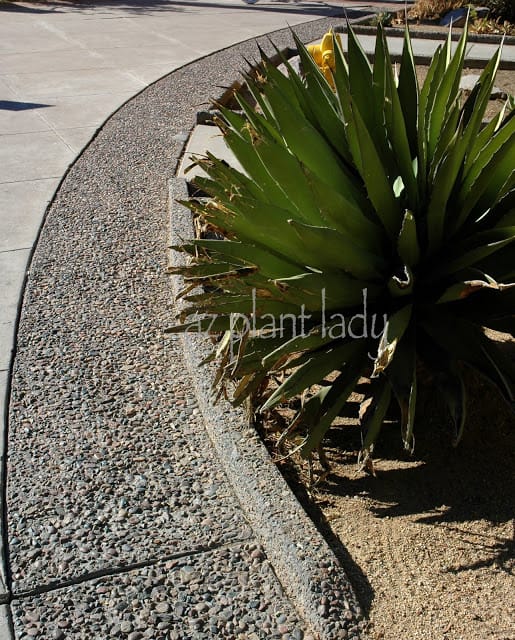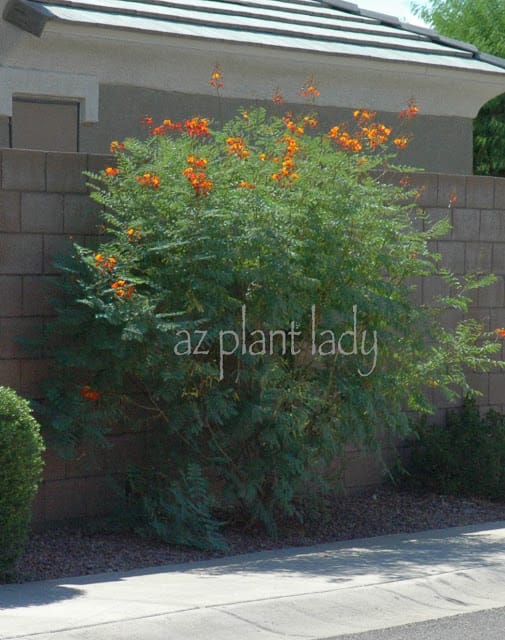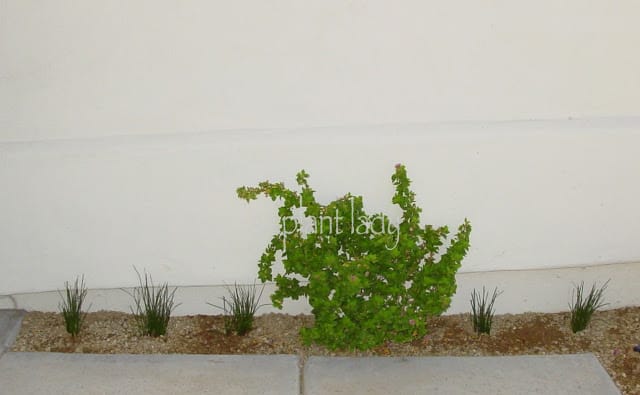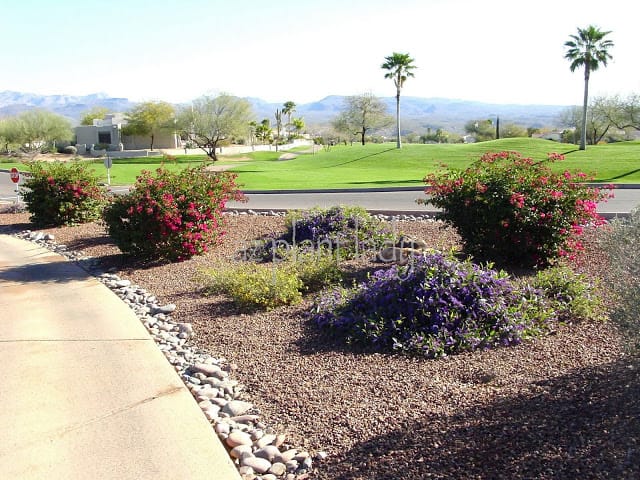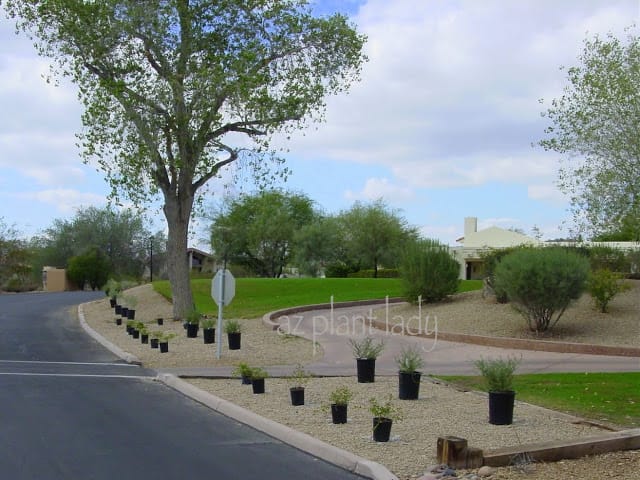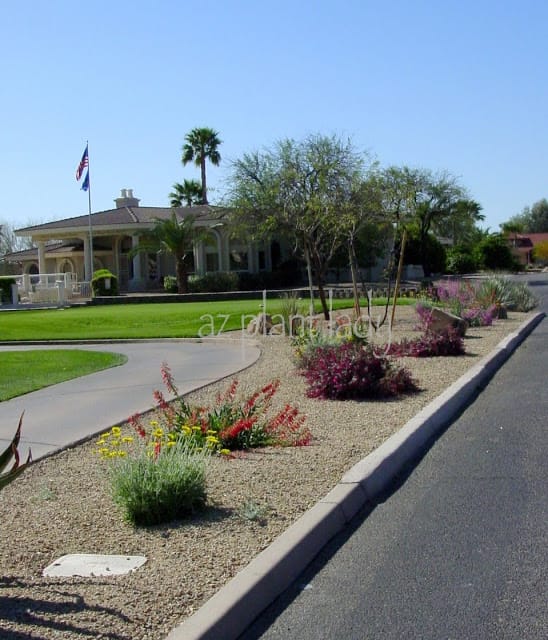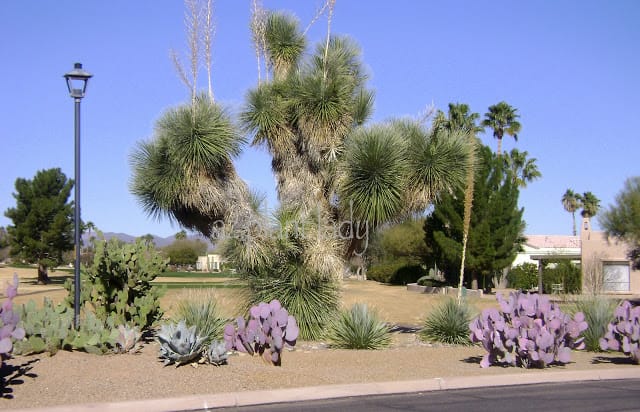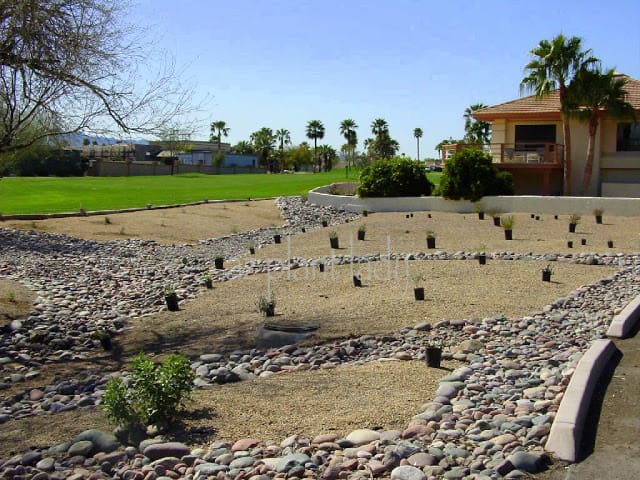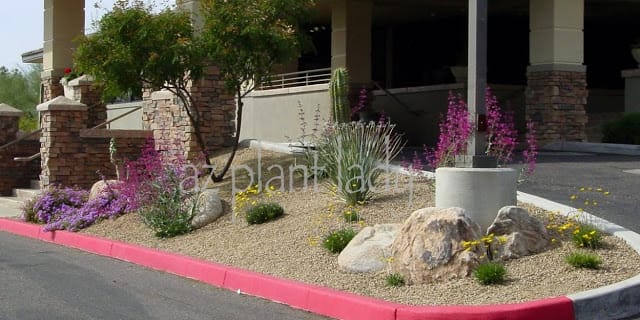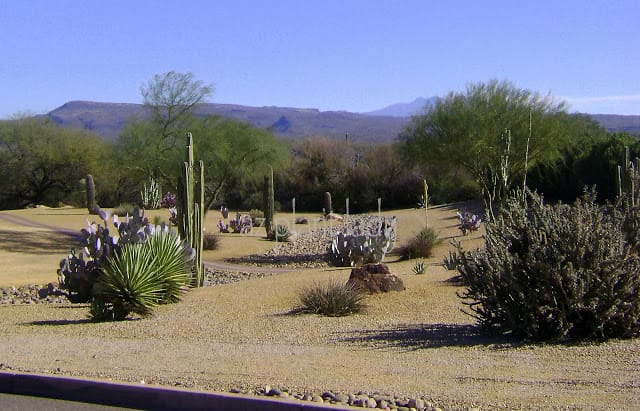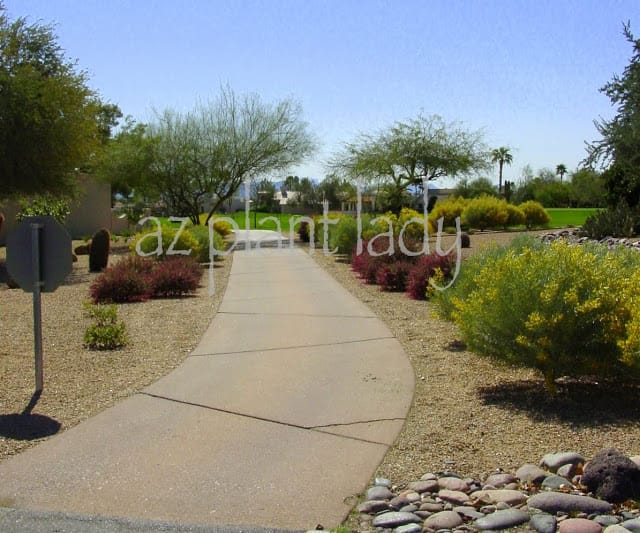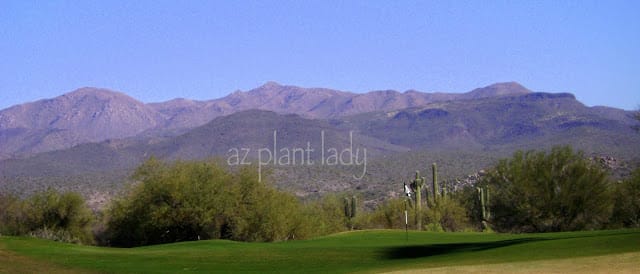Community Center landscape which I was honored to have designed along with renown landscape architect, Carl Johnson.
This past weekend, I participated in a landscape discussion panel as part of a “Living Green in the Desert” seminar. Attendees were able to submit their questions ahead of time as well as ask their questions directly to us.
Golf Course Feature Area with Bougainvillea, Gold Lantana and Purple Lilac Vine grown as a groundcover (2002).
I was looking forward to being a part of this seminar because I had worked in this community for over 5 years as a horticulturist. So I arrived early and drove around the community and golf course areas looking at the areas that I had designed and planted over 7 years ago.
Plants that I had set out ready for the crew to come and plant (2005).
I look at the landscape areas as old friends. Of course, as living things often do, many had changed. Some areas had matured and the small plants that I had set out had matured into beautiful specimen plants. Other areas looked a little bare since flowering perennials had not been replaced, but the areas were well-maintained.
Desert Marigold, Firecracker Penstemon, Eremophila Valentine and Desert Spoon were planted in this feature area (2002).
There were 3 of us on the desert landscape panel. Although I knew one of the other participants, I always enjoy the instant camaraderie that occurs between fellow landscape professionals.
We had three different landscape sessions and the focus was on ‘living green’ in the desert landscape but all gardening questions were welcomed.
This feature area consists of only succulents such as Soaptree Yucca, Purple Prickly Pear, Desert Spoon, Opuntia robusta, Agave colorata among others. There is no regular irrigation in this area. We hand-watered the cactus monthly during the first two summers until they were established.
There were some excellent questions, and I will highlight the most popular ones.
Question #1- When and how do we prune our shrubs. Are they supposed to look like ‘balls’?
There is an epidemic in the Arizona desert where desert shrubs are pruned into round ball shapes, or as we in the landscape industry refer to as “poodle or cupcake” pruning. Those of you who have been reading my blog for awhile have seen me get up on my “high-horse” more then once, and rail against this practice. I will not repeat myself here, but you can read my previous post where I dealt with this unfortunate practice – Shrubs Aren’t Meant To Be Cupcakes.
This was my favorite part of my job; designing new landscapes and seeing it all come together.
Although the plants are very small when first planted, they grow very quickly in our climate.
Question #2 – When should I fertilize my plants?
Actually, most of your arid-adapted plants do not need to be fertilized. I only fertilize my plants if they show signs of a nutrient deficiency. We do fertilize our container plantings and fruit trees. Compost can be applied to all plants as this ‘feeds’ the soil.
Purple Trailing Lantana, Mexican Bird-of-Paradise, Parry’s Penstemon, Desert Spoon and Angelita Daisy brighten the entrance to the clubhouse (2005).
Question #3 – Is it possible to have plants in my landscape that do not require any water?
The answer is yes you can if you use native plants. But, you will have to water them until they become established. Keep in mind that all native plants will look much better when watered periodically. That is what is done to the plants at the Desert Botanical Garden.
For excellent guidelines as to how long and often you should water your plants, please check out this excellent site, which has information about irrigating your plants in the Arizona desert, including a schedule you can put in your irrigation controller – Landscape Watering Guide
The native plants were watered in this area monthly until they were established. Periodic water was supplied during the summer months (2005).
Question #4 – Is it possible to have a winter landscape with flowering plants?
The answer is absolutely! Many residents of this community are winter visitors and are away in the summer when most plants are flowering. You can read more in a previous post of what types of plants flower during the winter months – Colorless Winter Garden…No Way!
This area was planted with Eremophila Valentine and Cassia shrubs.
Question #5 – How often do I need to water my citrus trees? They are currently being watered twice a week.
When I am asked to consult with a homeowner regarding their landscape, over 90% are watering their citrus too frequently and not deeply enough. For example, in the winter months, citrus trees should only be watered once every 3 – 4 weeks. Many were shocked. I will cover citrus irrigation in more detail in the future, but there is excellent information which can be found here – Citrus Irrigation Guidelines.
One of my favorite views from the golf course.
I had a wonderful day and enjoyed seeing old friends and meeting new ones. I was able to spend the day doing one of my most favorite things – help people learn how easy it is to have a beautiful, low-maintenance garden in the desert using plants that thrive in our climate.
Gardening in the desert is not difficult, it is just different….
